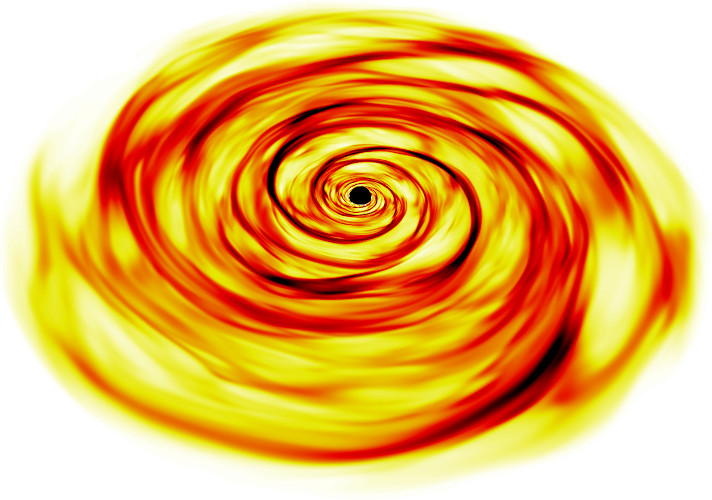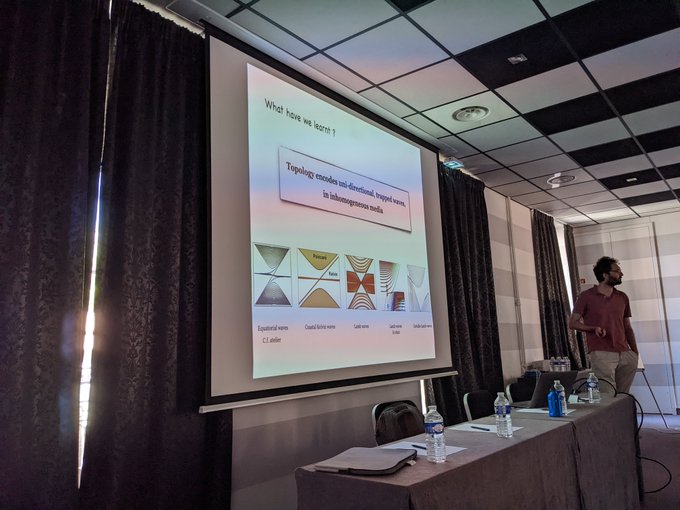In addition to running our seminar cycle, we also aim at organizing University-wide and open to all events.
Introduction to ion trapping and single-ion quantum opto-spin-mechanics
From 18 to 5 august and from 6 to 14 october, we will have the pleasure to host Dr. Lukas Slodicka from the Department of Optics and Quantum Optics Laboratory, Palacky University, Olomouc, Czech Republic. His research focusses on nonclassical light emission from trapped ions and atomic vapors and during his stay he will propose the doctoral lecture outline below.
For more information, please contact mathilde.hugbart@inphyni.cnrs.fr or jean-pierre.rivet@oca.eu.
- Invited Professor: Lukas Slodicka
- Title: Introduction to ion trapping and single-ion quantum opto-spin-mechanics
- Date: October 7th, 9:15-12:15
- Where: Institut de Physique de Nice in Sophia Antipolis, 1361 route des lucioles.
- Registration: Please send email to mathilde.hugbart@inphyni.cnrs.fr ideally not later than september 28th.
Atomic ions trapped and laser-cooled in radio-frequency electric potentials have pioneered the experimental control of some of the most fundamental aspects of interaction of light and matter in the quantum domain. They provided an unique testbed for implementation of a precise control of both external-motional and internal-electronic states at the level of individual atoms. Within the past four decades, single trapped ions served for the paramount developments of laser cooling, studies of resonance fluorescence of atoms, and embodied a piloting platform for experimental tests some of the paradigmatic principles of quantum mechanics. The exclusivity of the precise control of the quantum motion of ions in Paul traps at the level of individual motional quanta triggered the pioneering experiments in quantum information processing, and the platform continues to be the most promising for achieving the crucial prospects of its scallability. The high level of isolation of ions from the environment, sub-wavelength localization, and the related availability of very precise spectroscopic methods, are perhaps most apparent in the extreme precision achievable with the optical clocks based on single trapped ions.
The first part of the lecture will introduce the basic physical phenomena relevant to the localization of ions in Paul traps, their laser cooling, and precise manipulation of the electronic and motional degrees of freedom. It will include the simplified description of the interaction of coherent laser light with a single trapped ion in the limit of a quantized motion. The crucial aspects of the sub-wavelength localization limit of this interaction and the corresponding basic processes of controllable coherent coupling between the quantized motion and internal-electronic states will be presented. This will be complemented by the introduction to fundamental methods for the manipulation and read-out of nonclassical motional states of ions in both linear and non-linear interaction regimes. The basic phenomena relevant for the storage and manipulation of states of several ions will be also considered.
The second part of the lecture will focus on the fundamental principles of some of the target applications of ions in Paul traps. It will include an introduction to possible qubit encoding schemes and implementation of basic single and two-qubit gates. The representative applications to quantum simulations of magnetism and particular aspects of optical precision spectroscopy will be introduced. The lecture will conclude with a discussion of feasible prospects controlling the emission of nonclassical light from ions prepared in the quantum states of motion provided by a unique combination of localization parameters of ions in Paul traps. Reciprocally, the possibility of a direct imaging of position probability distributions of quantum states of atomic motion will be considered.
Gravito-turbulence in accretion disks: instability, spirals and locality
- Invited Professor: William Bethune
- Date: July 1, 2022
- Where: Parc Valrose - Fizeau building 1st floor - Room Chesneau
A variety of astrophysical disks exhibit spiral arms, notably around young stars. One plausible origin for these structures lies in the self-gravitating nature of the disk, when it is still massive relative to its central star. In this case, spiral features may provide valuable clues on the conditions of disk dispersal and planet formation, such as the disk mass, temperature, etc. However they are often described as linear waves in razor-thin disks, and their role on the evolution of the disk is commonly reduced to an effective turbulent viscosity. I will look back at these approximations in light of recent numerical simulations and discuss the deceptive nature of large-scale spiral arms as they appear in gravito-turbulent disks.
For more information, please contact heloise.meheut@oca.eu.
Online version: in person attendence is preferred but just in case, a zoom link will also be available:
- https://univ-cotedazur.zoom.us/j/85708210897?pwd=GEe0x9dV_LNmUEmUJFKzsDbRmviEPJ.1
- ID : 857 0821 0897
- Code : 560950
Waves and topology: from mathematics to geosciences
- Invited Professor: Pierre Delplace
- Date: June 16, 2022
- Registration deadline: May 25, 2022
- Location: Hotel Saint-Paul, 29 boulevard Franck Pilatte. 06300 Nice.
Topology is a branch of mathematics that has many applications in wave transport, in particular to explain the conduction properties of certain materials or ocean currents.
This one-day workshop aims to bring together master’s and doctoral students and a few researchers around a cross-disciplinary subject related to the “Wave complexity” thematic season. The students targeted come from training in mathematics, physics and geosciences.
An introductory course on topology and its applications in physics and geophysics will be given in the morning by a renowned specialist in the field, Pierre Delplace from the physics laboratory of ENS Lyon. The afternoon will be dedicated to collaborative workshops where the students will be able to exchange their analyzes on a few selected articles. The objective is to make them aware of the importance of interdisciplinary interactions in scientific research.
For more information, please contact mathias.albert@inphyni.cnrs.fr and matthieu.bellec@inphyni.cnrs.fr
Registration:
Registration is free for members of Université Côte d’Azur. Please register soon as it helps for the organization and the number of available seats is limited. Registration will be open until the 25th of may by filling in the Waves and topology registration form.
Waves And Complexity: Nonlinearity, complex phenomena and universality for waves
- When: 10-15 May 2022
- Where: Ile de Porquerolles
With the support of CNRS and Université Côte d’Azur through the Academy of Complex Systems, the school will
- Underline universality of theoretical approaches aimed at describing nonlinear waves in various physical contexts
- Provide the necessary tools to contribute to the developement of theoretical, numerical and experimental study of complex systems and waves
- Present recent developement and perspectives along several axis including waves and turbulence in astrophysics, quantum fluids, surface waves…
More information on the waves and complexity 2022 spring school: nonlinearity, complex phenomena and universality for waves
Graduate lecture: Surface approach to electromagnetic scattering: from classical electromagnetism to quantum effects
- When: 20th october 2021, 10:30 AM.
- Where: Seminar room, Institut de Physique de Nice, 1361 route des lucioles 06560, Valbonne and also online
Dr. Francesco Papoff
(Physics Department, University of Strathclyde, Scotland (UK))
In nanophotonics we consider the interaction of light with simple emitters like molecules or quantum dots in close proximity to stuctures that are of the same size or smaller than the wavelength of light. This provides us with opportunity to modify and design the interaction of light and enhance by several order of magnitudes interaction processes beyond the electric dipole that are normally negligible in macroscopic optic. From a theoretical standpoint, we need to consider the full Maxwell equations and find a way to describe quantum processes. Starting from a brief review of Mie theory, I will discuss how a surface approach can be used to derive the classical electromagnetic response - the Green’s function - of the nanostructures and outline how we can derive an effective quantum mechanic theory from the classical Green’s function.
The lecture aims at disseminating recent approaches and will be offered in broadly accessible ways, refraining from technicalities. The second part of the allotted time will be left for questions and discussions.
Contact: for additional information or to organize a meeting with Dr. Papoff during his stay, please contact gian-luca.lippi@inphyni.cnrs.fr
Wavecomplexity International Networking Event
The Wavecomplexity International Networking Event takes place 1st and 2nd july 2021.
Graduate lecture: The wave turbulence theory in examples
Many thanks to Prof. Alexander O. Korotkevich from The University of New Mexico for giving a two-sessions online lecture on the wave turbulence theory:
- Monday 12 october 3-6PM: Introduction to the Wave Turbulence Theory.
- Wednesday 14 october 3-6PM: Direct and Inverse cascades: Kolmogorov-like solutions.

